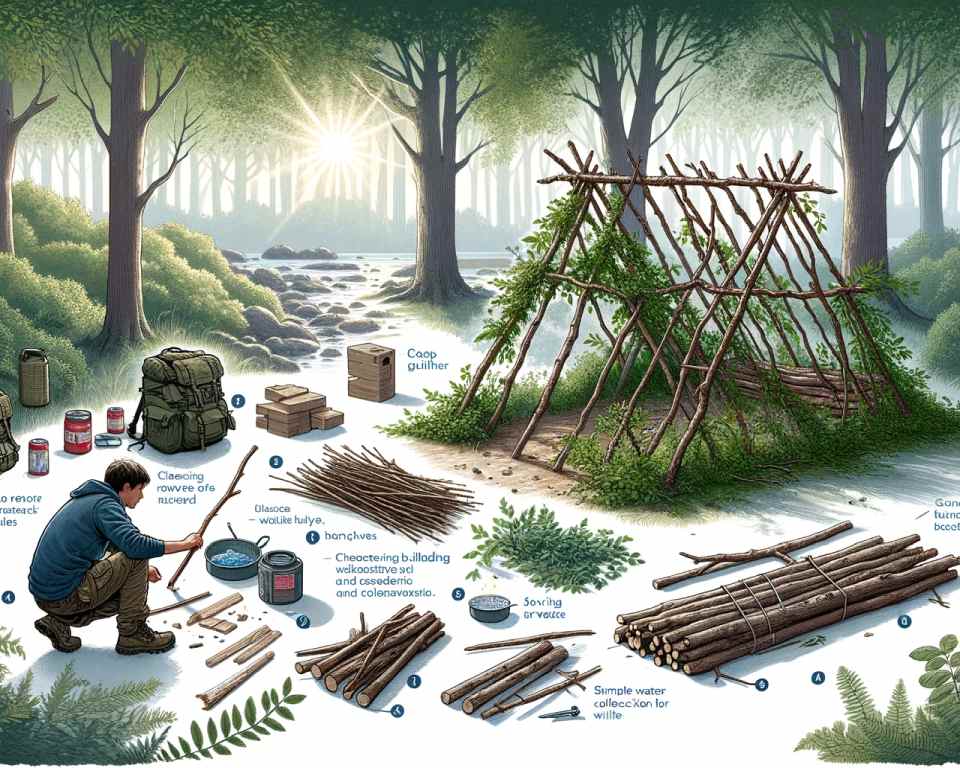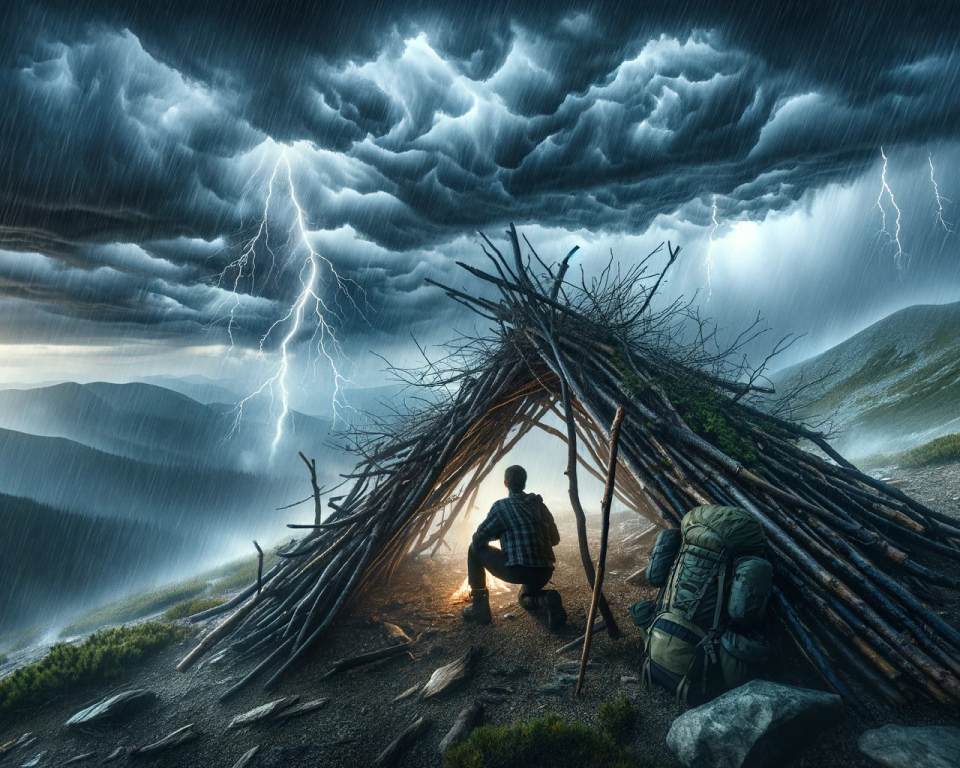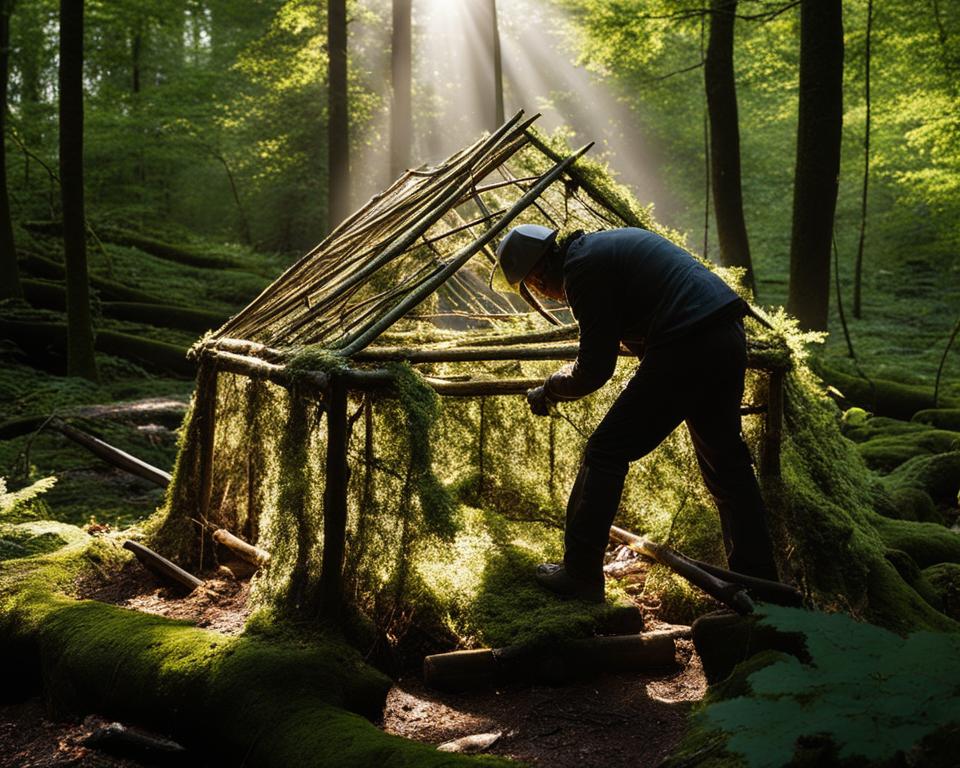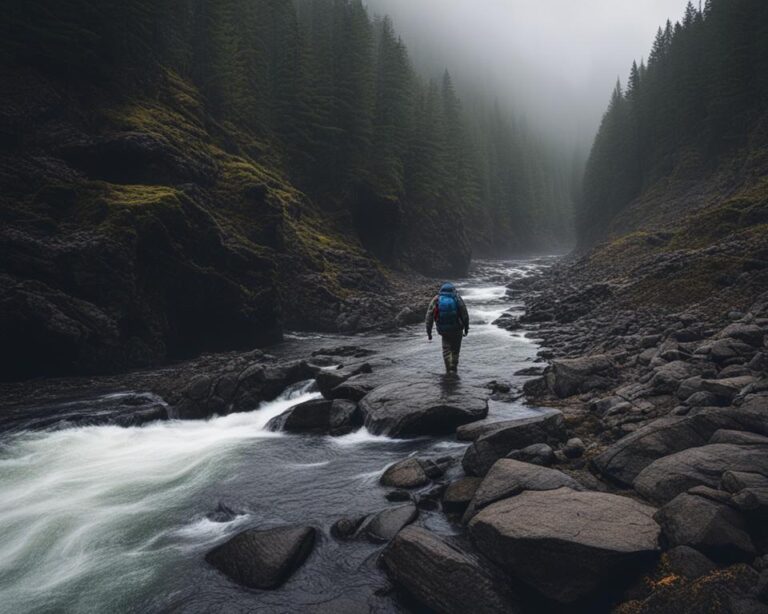Mastering the Art of Shelter Building in Varied Wilderness Terrains
Welcome to our guide on mastering the art of shelter building in varied wilderness terrains. Whether you are an outdoor enthusiast, a survivalist, or simply someone looking to enhance your camping skills, understanding the intricacies of wilderness shelter construction is essential.
In this comprehensive article, we will delve into the importance of shelter in survival situations, explore different types of survival shelters, discuss the essential tools and materials required, and provide step-by-step guidance on shelter building techniques. We will also explore the effectiveness and timeliness of shelter construction, highlight the significance of site selection, and offer insights on finding water and purifying it in the wild.
Through this guide, we aim to equip you with the knowledge and skills necessary to build both improvised and natural shelters, ensuring your comfort and safety in the great outdoors. So let’s embark on this exciting journey of wilderness shelter building together!
The Vital Importance of Shelter
Shelter plays a critical role in survival situations, offering protection and serving as a defense against the elements. It provides a safe haven from rain, snow, wind, and extreme temperatures, ensuring our well-being in challenging environments.
But shelter is not just a physical barrier; it also serves as a psychological refuge. In times of stress and anxiety, having a shelter can provide comfort and a sense of security, helping to maintain mental well-being in survival situations.
Furthermore, a well-constructed shelter increases visibility, improving our chances of being found and rescued. Search and rescue teams can easily spot a shelter from a distance, guiding them towards our location swiftly.
Here’s an image depicting the importance of shelter:
“A shelter is not just a physical structure; it’s a place where we can find solace and hope amidst the harshest conditions.”
Whether we find ourselves stranded in the wilderness or facing unforeseen circumstances outdoors, the importance of shelter cannot be overstated. It serves as our first line of defense, providing both physical and emotional support in our fight for survival.
Types of Survival Shelters
When it comes to building survival shelters, there are various options to consider depending on the situation. Each type of shelter offers unique advantages and is suitable for different terrains and weather conditions. Let’s explore some of the most common types:
1. Lean-to Shelter
The lean-to shelter is a simple yet versatile option. It involves leaning a ridgepole against a support structure such as a tree or rocks. This design allows for easy construction and provides a basic overhead cover for protection against rain or snow.
2. Debris Hut
For a more advanced shelter, consider the debris hut. This type of shelter involves creating a framework using branches, which is then covered with insulating materials such as leaves, grass, or moss. The debris hut offers better protection from the elements and provides enhanced insulation.
3. A-Frame Shelter
The A-frame shelter is named after its distinctive “A” shape. It is a sturdy and reliable option that provides excellent protection against rain and snow. With its sloping sides, this shelter effectively sheds water and offers a comfortable space for occupants.
4. Tarp Shelter
A tarp shelter is a quick and efficient solution, particularly in emergency situations. Using a lightweight tarp or emergency blanket, you can create a makeshift roof to protect yourself from rain and wind. This type of shelter is highly portable and easy to set up.

5. Snow Cave
In snowy environments, a snow cave can be a lifesaver. By burrowing into a snowbank or mound, you can create a shelter that offers excellent insulation against extreme cold temperatures. The dense snow walls provide natural insulation and protect against harsh winds.
6. Tree Pit Shelter
When in forested areas, consider utilizing a natural formation known as a tree pit shelter. This involves finding a tree with exposed roots or a hollow area at the base and using it as a foundation for your shelter. Leaning branches or logs against the tree and covering them with foliage or branches creates a protective structure.
These are just a few examples of the types of survival shelters you can construct in the wilderness. Each shelter design has its advantages and limitations, so it’s essential to consider the specific environment and your needs before deciding on the most suitable option.
Essential Tools and Materials
To construct a wilderness shelter, we need a few essential tools and materials. These items are crucial for ensuring our safety and comfort in the wilderness.
1. Fixed Blade Knife
A sharp, fixed blade knife is an indispensable tool for shelter building. It allows us to cut branches, trim foliage, and carve notches in wood. A high-quality fixed blade knife, such as the Gerber StrongArm or the Buck Knives 119, provides the strength and durability needed for outdoor tasks.
2. Tarp or Emergency Blanket
To create an instant roof for our shelter, we can use a tarp or emergency blanket. These lightweight and waterproof materials protect us from rain, wind, and other elements. The Snugpak All Weather Shelter or the UST Survival Blanket are excellent options for this purpose.
3. Cordage
Strong cordage is essential for tying and securing the various components of our shelter. Paracord, with its strength and versatility, is a popular choice among outdoor enthusiasts. Other options include bank line, nylon rope, or natural fibers like jute twine or sisal rope.
4. Fire Starter
Having a reliable fire starter is crucial for warmth, cooking, and security when in the wilderness. Options range from traditional methods like flint and steel or a ferrocerium rod to modern tools like waterproof matches or a compact lighter.
5. Multi-Tool
A multi-tool is a handy device that combines various tools into one compact package. It can be used for cutting, screwing, prying, and various other tasks. The Leatherman Wave+ and the Victorinox Swiss Army Knife are popular choices among outdoor enthusiasts.
6. First Aid Kit
A properly stocked first aid kit is essential for any outdoor adventure. It should contain basic supplies like bandages, antiseptic wipes, tweezers, and pain relievers. The Adventure Medical Kits Mountain Series or the Elite Medical Instruments First Aid Kit are comprehensive options suitable for wilderness survival.
7. Map and Compass
Navigation tools like a map and compass are crucial for finding our way in the wilderness. They help us determine our location, plan routes, and avoid getting lost. Topographic maps and a reliable compass, such as the Suunto MC-2G or the Brunton TruArc 3, are essential for wilderness navigation.
8. Backpack
A sturdy and comfortable backpack is essential for carrying all our gear during outdoor adventures. It should have enough space to accommodate our equipment and be equipped with adjustable straps and support systems for maximum comfort. Brands like Osprey and Deuter offer a range of backpacks suitable for wilderness excursions.
9. Appropriate Clothing
Wearing the right clothing is vital for staying dry, warm, and protected in the wilderness. Wool or synthetic base layers, weather-resistant outer layers, durable pants, and waterproof footwear are essential. Brands like Patagonia, Outdoor Research, and REI offer a variety of outdoor clothing suitable for different weather conditions.
With these essential tools and materials, we can confidently embark on building our wilderness shelter.
Shelter Building Techniques
When it comes to shelter building, there are several techniques to consider. These techniques are crucial in ensuring that your shelter is sturdy, safe, and provides the necessary protection in wilderness environments. In this section, we will guide you through the step-by-step process of constructing a lean-to shelter, along with important considerations such as location selection, visibility, sunlight, and wildlife safety.
Selecting an Ideal Location
The first step in shelter building is to choose a suitable location. Consider selecting a spot that is easily visible, particularly if you’re in need of search and rescue assistance. Additionally, make sure to position your shelter to receive ample sunlight throughout the day for warmth and comfort. However, be cautious of selecting a location that is exposed to strong winds or potential hazards.
Constructing a Basic Lean-To Shelter
- Start by identifying two sturdy trees or support structures to serve as the foundation of your shelter.
- Prepare a ridgepole by finding a long and straight branch or log. It should be slightly longer than the distance between the two support structures.
- Collect and prepare frame and crosspiece materials by gathering branches or sturdy sticks of similar length.
- Weave the crosspieces horizontally between the support structures and the ridgepole, creating a framework for your shelter.
- Cover the frame with insulating materials such as leaves, pine needles, or grass. These materials will provide protection against the elements.
- Lastly, add a ground cover inside the shelter for added insulation and comfort.
Remember, the lean-to shelter is just one example of a survival shelter, and there are various other types that you can explore based on your specific needs and the available resources in your environment. Additionally, take inspiration from nature and indigenous wisdom, incorporating elements from animal burrows and bird nests into your shelter design to enhance its effectiveness.
“Shelter building techniques involve selecting an ideal location, such as a visible spot for search and rescue purposes, positioning the shelter to receive sunlight for warmth, and ensuring safety from potential wildlife encounters.”

Building a shelter in the wilderness requires careful planning, resourcefulness, and adaptability. By following these step-by-step techniques and considering essential factors such as location selection, visibility, sunlight, and wildlife safety, you can construct a reliable and comfortable shelter to protect yourself in challenging outdoor situations.
Improvised Shelters: Nature’s Blueprint
Nature and indigenous wisdom offer valuable inspiration when it comes to shelter design. By observing animal burrows, we can learn the benefits of digging into the earth for warmth and protection. These burrows showcase nature’s ingenuity in creating natural shelters that offer safety even in harsh environments.
Bird nests, on the other hand, teach us the importance of utilizing natural materials for safe and insulated shelters. Birds gather twigs, leaves, and feathers to construct their nests, demonstrating how we can leverage the resources available in our surroundings to create effective shelter.
Indigenous communities have developed unique shelter-building techniques that are adapted to specific environments. Their wisdom and knowledge have been honed over generations, resulting in effective and sustainable shelter designs. By studying these techniques, we can gain valuable insights into shelter construction in different terrains.
Wilderness Survival Shelter Scenario
A wilderness survival shelter is of utmost importance when faced with uncertain outdoor situations. Imagine you’re on a hike, and unexpectedly, the weather takes a turn for the worse. You find yourself lost, far from civilization, and left to battle the elements. In such a scenario, the significance of having a shelter cannot be overstated.
Building a shelter provides both comfort and safety. It offers a physical refuge, shielding you from harsh weather conditions and providing respite from the elements. With a well-constructed shelter, you can stay dry, warm, and protected from wind, rain, and snow.
Moreover, in uncertain outdoor situations like getting lost, building a shelter allows you to establish a sense of security and control. It helps alleviate anxiety and provides a psychological boost, enhancing your overall well-being.
When faced with adverse weather conditions and uncertainty about the right path, it’s essential to stop, assess the situation, and prioritize shelter construction. You may not have the luxury of knowing when or how help will arrive, but having a shelter increases your chances of survival and improves your comfort and safety until rescue or a resolution is found.
“When the world turns against us, the shelter becomes our fortress of solitude, protecting us from the wrath of nature and embracing us with its comforting embrace.”- Unknown

Importance of Shelter in a Survival Scenario
- Provides comfort and protection from extreme weather elements
- Offers a psychological refuge, reducing stress and anxiety
- Increases visibility to aid search and rescue efforts
- Preserves body temperature and reduces the risk of hypothermia or heatstroke
Shelter for Comfort and Safety
In uncertain outdoor situations, a shelter is essential for ensuring comfort and safety. It serves as a physical barrier between you and the harsh outdoor environment, providing a sense of security and peace of mind. With a well-built shelter, you can rest, recharge, and wait for the situation to improve.
“A shelter is more than just a structure. It’s a sanctuary that offers solace and protection in the face of adversity, a humble abode to weather the storm and emerge stronger on the other side.”- Unknown
Shelter in Uncertain Outdoor Situations
Uncertain outdoor situations can arise unexpectedly, leaving you vulnerable and exposed to the elements. Whether you’re lost in the wilderness, caught in a sudden storm, or stranded in a remote area, having a shelter becomes critical for your survival. It provides a temporary haven where you can gather your thoughts, assess the situation, and determine the next course of action.
In such scenarios, remember that building a shelter should be a top priority. Even a basic survival shelter can make a significant difference in your overall well-being and increase your chances of staying safe until help arrives.
Effectiveness of a Wilderness Survival Shelter
An effective wilderness survival shelter serves multiple purposes, providing both physical and psychological benefits. Let’s explore the effectiveness of a well-built shelter and how it contributes to the overall success of surviving in the wilderness.
The Purpose of Shelter
The primary purpose of a wilderness survival shelter is to protect individuals from the harsh elements of nature. Whether it’s torrential rain, bone-chilling cold, or scorching heat, a sturdy shelter shields against these conditions, ensuring the preservation of body temperature and reducing the risk of hypothermia or heatstroke.
Moreover, a shelter serves as a psychological refuge. Being in a safe and secure environment boosts morale and mental well-being. It instills a sense of control and provides solace amidst the uncertainty of the wilderness. The presence of a shelter offers reassurance, allowing individuals to focus on other essential tasks, such as finding food and water or signaling for help.
Protection and Safety
A well-built wilderness shelter acts as a barrier of protection against various threats. By providing a physical barrier, it keeps individuals safe from potential wildlife encounters, reducing the risk of conflicts and injuries. Additionally, a shelter offers privacy and seclusion, minimizing exposure to potential predators or opportunistic humans.
Furthermore, a shelter enhances visibility, making it easier for search and rescue teams to locate individuals in distress. In emergency situations, the quick identification of a shelter can significantly expedite rescue efforts, potentially saving lives.
Improved Effectiveness
Building an effective wilderness survival shelter significantly improves overall effectiveness in a wilderness setting. With a properly constructed shelter, individuals can conserve energy by avoiding excessive movement and exposure. This allows them to allocate resources more efficiently and focus on other survival tasks, such as gathering food, purifying water, or navigating their way to safety.
Additionally, the psychological boost provided by a shelter aids in decision-making and problem-solving. When individuals feel secure and comfortable, they can think more clearly and make better choices, increasing their chances of survival and successful navigation through challenging situations.
In the words of renowned survival expert Bear Grylls, “A good shelter is critical in a survival situation. Not only does it provide essential protection from the elements, but it also gives you a psychological boost that can make all the difference in overcoming adversity.”
A well-built wilderness survival shelter serves multiple purposes, offering protection from the elements and providing a psychological boost. Its effectiveness lies in its ability to preserve body temperature, ensure safety, and improve overall survival chances. Remember, in the wilderness, a reliable shelter can make all the difference between mere existence and thriving in the face of adversity.
Timeliness of a Wilderness Survival Shelter
When it comes to building a wilderness survival shelter, time is of the essence. In survival situations, time limitations can be imposed by factors such as diminishing daylight or adverse weather conditions. Therefore, the ability to construct a shelter quickly is vital, as it allows more time for other essential tasks that are crucial for survival.
Building a shelter quickly is important for several reasons. First and foremost, shelter provides protection from the elements, shielding us from rain, snow, wind, and extreme temperatures. By constructing a shelter in a timely manner, we create a safe haven that helps to regulate our body temperature and prevent hypothermia or heatstroke.
Moreover, building a shelter quickly allows us to allocate our time and energy efficiently. In survival situations, there are numerous tasks to be completed, such as gathering necessary supplies, preparing food, and signaling for help. Without a shelter, these tasks become more challenging and time-consuming, as we are constantly exposed to the elements and at risk of fatigue or illness.
“In the wilderness, time can be our friend or our enemy. By building a shelter quickly, we ensure that time is on our side, allowing us to focus on other essential aspects of survival.”
Additionally, a timely shelter construction increases our chances of being found in the event of a search and rescue operation. A well-built shelter not only provides physical protection but also makes us more visible to search teams, increasing the likelihood of being spotted and rescued in a timely manner.
Ultimately, building a wilderness survival shelter quickly is a critical skill that can significantly improve our chances of survival. By prioritizing timely construction, we create a secure and comfortable space that allows us to focus on other important tasks, increasing our overall effectiveness in a survival situation.
Site Selection
In order to build an effective wilderness shelter, site selection is of utmost importance. This process involves strategic decision-making to ensure safety, protection, and comfort during your stay. Let’s explore the key factors to consider when choosing an ideal location.
Avoid Widowmakers for Safety
When scouting for a suitable shelter spot, it’s crucial to avoid widowmakers – dead trees or loose branches that can fall and cause harm. These natural hazards can pose a significant risk, especially during extreme weather conditions or strong winds. Prioritize your safety by carefully inspecting the area for any potential dangers and selecting a site clear of widowmakers.
Consider Wind and Terrain
Shelter effectiveness is heavily influenced by wind and terrain. Choose a location that provides natural wind protection to minimize the impact of strong gusts on your shelter. This can be achieved by building against a sturdy natural barrier, such as a rock formation or thick vegetation. Additionally, consider the terrain to ensure a flat, stable surface for constructing your shelter, avoiding steep slopes or areas prone to flooding.
Utilize Natural Shelters
In some cases, nature provides ready-made shelters that can serve as an excellent foundation for your own construction. Caves or large trees with ample foliage can offer natural protection from the elements and make the shelter-building process more efficient. Utilizing these existing features can save time and resources, allowing you to focus on enhancing the shelter’s functionality.
“By carefully selecting the right site, we can optimize the safety, durability, and overall effectiveness of our wilderness shelter. Don’t overlook the importance of site selection in your shelter-building adventure.”
With a thorough understanding of the importance of site selection, as well as the need to avoid widowmakers, consider wind and terrain, and explore the potential of natural shelters, you’ll be well-prepared to construct a successful wilderness shelter. Remember to always prioritize safety and comfort as you embark on your outdoor adventures.
How to Find Water in the Wilderness
Finding water is essential for survival in the wilderness. When in the wild, scouting for water sources becomes a top priority. Let’s explore some effective strategies for finding water and ensuring your hydration needs are met.
1. Scouting for Natural Water Bodies
One of the primary strategies for finding water in the wilderness is to scout for natural water bodies like streams, rivers, and lakes. These natural water sources are usually reliable and can provide a sufficient supply of water for drinking, cooking, and hygiene purposes.
2. Rainwater Collection
Another viable method for obtaining water is through rainwater collection. When it rains, you can set up a rainwater catchment system using a tarp or other waterproof material to collect and store rainwater. This method requires careful planning and positioning to maximize water collection.
Pro Tip: To increase the efficiency of your rainwater collection, place containers strategically near slopes or depressions where water naturally accumulates.
3. Dew Collection
In arid or desert environments where natural water sources may be scarce, dew collection can be a lifesaver. Dew forms on surfaces during the early morning when temperatures drop, and moisture in the air condenses. To collect dew, you can use absorbent materials like clothing or vegetation, squeezing them to extract the collected moisture.
4. Utilizing Vegetation as Water Sources
Vegetation can also serve as a valuable water source in the wilderness. Certain plants, like cacti, contain water-rich tissues that can be tapped into for hydration. Carefully research the local flora and learn which plant species are safe to consume water from.
5. Ensuring Water Safety
It is crucial to identify clean water sources in the wilderness to avoid contamination and potential illnesses. Natural water bodies are generally a safer option, but if you collect water from other sources, such as rain or dew, consider using water purification techniques before consumption.
Remember, water is a fundamental resource for survival, and being proactive in finding and ensuring its safety is paramount. By scouting for water sources, collecting rainwater and dew, utilizing vegetation, and prioritizing purification, we can meet our hydration needs and thrive in the wilderness.
Best Methods to Purify Water in the Wild
Purifying water is essential for ensuring safe consumption in the wilderness. With the absence of clean drinking water sources, it becomes crucial to utilize effective water purification methods. Boiling is considered the safest and most reliable method for purifying water in the wild. By heating the water to a rolling boil for at least one minute (or three minutes at higher altitudes), harmful bacteria, viruses, and parasites are effectively killed, making the water safe to drink.
In addition to boiling, filtration and chemical purification methods are also viable options. Filtration systems with activated carbon filters can remove larger particles, sediment, and some bacteria, improving the taste and odor of the water. Chemical purification involves using water treatment tablets or liquid drops containing chlorine, iodine, or other disinfectants to kill microorganisms. These methods are effective in neutralizing harmful pathogens, making the water suitable for consumption.
In desperate situations where conventional water sources are scarce, certain unconventional water sources can provide drinkable water. Some plants, such as the banana yucca or barrel cactus, contain spongy pulp or sap that can be squeezed to extract liquid. While these sources may not be abundant, they can provide a lifesaving alternative when other options are limited.
Remember, it is crucial to prioritize water safety in the wild. Always carry the necessary equipment for water purification, such as a camping stove or portable water filters, and be aware of local regulations and restrictions. By knowing the best methods to purify water and utilizing them effectively, we can ensure our hydration needs are met during challenging wilderness adventures.
FAQ
Why is shelter building important in the wilderness?
Shelter building is vital for survival in the wilderness as it provides protection against the elements and offers a psychological refuge. It ranks as one of the most important survival skills and plays a key role in the Rule of Threes.
What are the different types of survival shelters?
The different types of survival shelters include the lean-to shelter, debris hut, A-frame shelter, tarp shelter, snow cave, and tree pit shelter. Each type is suitable for different situations and provides varying levels of protection.
What tools and materials are essential for building a wilderness shelter?
Essential tools and materials for building a wilderness shelter include a sharp, fixed blade knife, tarp or emergency blanket, cordage, fire starter, multi-tool, first aid kit, map and compass, backpack, and appropriate clothing.
What are some techniques for building a wilderness shelter?
Shelter building techniques include selecting an ideal location, positioning the shelter to receive sunlight, and ensuring safety from potential wildlife encounters. A step-by-step guide for constructing a basic lean-to shelter involves selecting a location, preparing a ridgepole, collecting and preparing frame material, weaving crosspieces, covering with insulating materials, and adding a ground cover.
Are there any natural or improvised shelter-building techniques?
Yes, nature and indigenous wisdom provide inspiration for shelter design. Animal burrows and bird nests demonstrate the benefits of digging into the earth and using natural materials. Indigenous communities have developed effective shelter-building techniques adapted to specific environments.
Why is a wilderness survival shelter important in uncertain outdoor situations?
In a survival scenario, having a shelter becomes crucial for comfort and safety. It provides a physical refuge, protects against extreme weather elements, and increases the chances of being found and rescued in a timely manner.
How does a wilderness survival shelter enhance effectiveness and chances of survival?
An effective wilderness survival shelter shields against the elements, preserves body temperature, reduces the risk of hypothermia or heatstroke, and provides a psychological boost. It improves overall effectiveness in a wilderness setting.
Why is timeliness important when building a wilderness survival shelter?
Time may be limited in a survival situation due to adverse weather conditions or diminishing daylight. Being able to construct a shelter quickly allows more time for gathering supplies and preparing for other essential tasks.
What factors should be considered for site selection when building a shelter?
Factors to consider for site selection include avoiding widowmakers, such as dead trees or loose branches, choosing a location protected from wind and adverse weather conditions, and utilizing natural shelters like caves or large trees.
How can water be found in the wilderness?
Water can be found in the wilderness by scouting for natural water bodies like streams and lakes, collecting rainwater, dew, and utilizing vegetation as water sources.
What are the best methods to purify water in the wilderness?
The best methods to purify water in the wilderness include boiling, filtration, chemical purification, and utilizing unconventional water sources.








